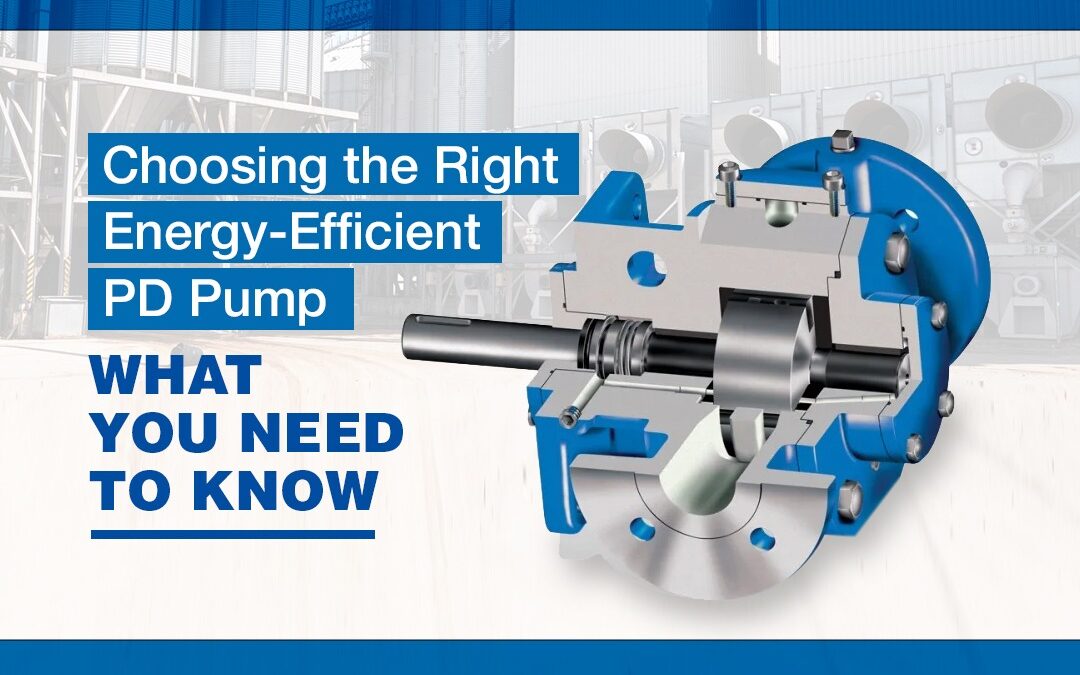Industries worldwide are focusing on energy efficiency. Pumping systems are no exception. Rising energy costs make efficiency a priority. Sustainable practices are also driving this shift. Companies now seek fluid-handling technologies that reduce waste. These solutions must also minimise environmental impact.
Energy-efficient pumps lower operational costs. They also help industries meet regulatory standards. Corporate sustainability goals align with these innovations.
Why Positive Displacement (PD) Pumps?
Positive displacement (PD) pumps are gaining popularity. They offer key advantages over centrifugal pumps. Centrifugal pumps use kinetic energy to move fluids. PD pumps provide a steady flow, even with pressure changes. This makes them ideal for precision applications. They also handle high-viscosity fluids effectively.
Industries rely on PD pumps for reliability. Sectors like oil & gas, chemicals, and food processing use them. They perform well with abrasive and corrosive fluids. Precision dosing and metering make them valuable.
This blog explores PD pump technology. It covers their working principles and selection criteria. Energy efficiency factors are also discussed. A discussion on IDEX India’s PD pump solutions provide further insights.
Understanding Positive Displacement (PD) Pumps
How PD Pumps Work?
PD pumps trap a fixed volume of fluid. They then displace it through the pump chamber. This ensures a steady and reliable flow. Pressure fluctuations do not affect performance. PD pumps use either reciprocating or rotary motion. This makes them suitable for various applications.
Types of PD Pumps
Reciprocating Pumps:
- Piston Pumps
- Handle high-pressure needs.
- Require regular maintenance.
- Plunger Pumps
- Built for durability.
- Handle abrasive fluids efficiently.
- Diaphragm Pumps
- Prevent leaks.
- Ideal for corrosive chemicals.
Rotary Pumps:
- Gear Pumps
- Deliver consistent flow.
- Not suited for abrasive fluids.
- Screw Pumps
- Provide smooth and reliable operation.
- Work well with viscous fluids.
- Lobe Pumps
- Designed for sanitary use.
- Common in food and pharmaceuticals.
- Vane Pumps
- Compact and efficient.
- Used for light to medium viscosity fluids.
- Peristaltic Pumps
- Offer precise dosing.
- Have limited flow capacity.
Each pump type has specific strengths. Matching the right pump to the application is crucial.
Key Factors in Choosing the Right PD Pump
Flow Rate and Pressure Requirements
Understanding flow volume is essential. Pressure demands must also be considered. Choosing the right pump ensures efficiency.
Viscosity and Fluid Characteristics
Fluids vary in viscosity and abrasiveness. Their chemical makeup also differs. Both factors must be considered. Selecting the right pump minimises wear. Proper selection improves efficiency.
Material of Construction
Corrosion-resistant materials extend pump life. Wear-resistant designs improve durability. This is crucial for harsh environments.
Pump Efficiency and Energy Consumption
Efficiency depends on design and operation. Volumetric efficiency measures performance. Power consumption affects costs. Optimised pumps reduce waste.
Maintenance and Lifecycle Costs
Upfront costs are only part of the equation. Long-term costs impact profitability. Easy maintenance reduces downtime. Durable pumps improve overall value.
Also Read: The Ultimate Guide to Diaphragm Pumps: Types, Uses, and Advantages
Why Energy Efficiency Matters in PD Pumps?
Reducing Operational Costs
Energy-efficient pumps cut electricity use. Lower energy consumption saves money. Industries benefit from reduced expenses.
Sustainability and Regulatory Compliance
Environmental regulations are becoming stricter. Efficient pumps help meet sustainability goals. They also reduce carbon footprints.
Optimised Performance with Smart Technologies
Smart sensors enhance efficiency. Variable frequency drives (VFDs) improve control. Digital monitoring provides real-time insights. Performance optimisation is key.
How to Ensure Maximum Energy Efficiency in Your PD Pump?
Proper Sizing and Selection
Oversized pumps waste energy. Undersized pumps fail to meet demand. Proper sizing ensures peak efficiency.
Integration with Smart Control Systems
Automation improves accuracy. IoT-based monitoring enhances control. Smart systems boost energy savings.
Regular Maintenance and Performance Optimisation
Routine maintenance prevents wear. Scheduled servicing reduces downtime. Long-term efficiency improves reliability.
IDEX India’s Energy-Efficient PD Pump Solutions
IDEX India designs high-performance PD pumps such as IDEX Cognito. Their solutions focus on energy efficiency. Their products cater to multiple industries.
Key Features of IDEX India’s PD Pumps
- High energy efficiency lowers costs.
- Robust design ensures durability.
- Minimal maintenance boosts productivity.
- Smart control integration enhances performance.
IDEX India serves diverse industries. Their pumps handle chemical processing. They also support food production. Oil & gas applications benefit as well.
IDEX India prioritises customer service. They offer tailored pumping solutions. Their after-sales support ensures long-term reliability.
Conclusion
Energy-efficient PD pumps lower costs. They improve sustainability. Proper selection enhances operations. Smart technologies will drive efficiency. Innovation will improve fluid handling. Energy savings will set new industry standards.
